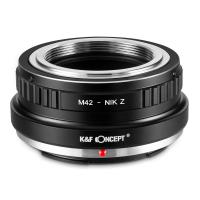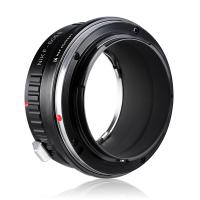How Do Optical Microscopes Work ?
Optical microscopes work by using visible light to magnify and observe small objects or specimens. They consist of several key components, including an objective lens, an eyepiece, and a light source. The light source illuminates the specimen, which is placed on a stage beneath the objective lens. The objective lens collects and focuses the light, forming an enlarged and inverted image of the specimen. This image is then magnified further by the eyepiece, which allows the viewer to see the specimen in greater detail. The magnification power of an optical microscope is determined by the combination of the objective lens and the eyepiece. Additionally, optical microscopes often employ various techniques, such as adjusting the focus and using different types of lenses, to enhance the clarity and contrast of the observed image.
1、 Principles of optical microscopy: magnification and resolution.
Optical microscopes work based on the principles of magnification and resolution. These microscopes use visible light to illuminate a sample and produce an enlarged image for observation. The magnification principle involves the use of lenses to increase the apparent size of the sample, allowing for detailed examination.
The first step in the process is to illuminate the sample with a light source, typically a bulb or LED. The light passes through a condenser lens, which focuses the light onto the sample. The light then interacts with the sample, either by being absorbed, transmitted, or reflected. The resulting light is collected by the objective lens, which further magnifies the image.
Resolution, on the other hand, refers to the ability of the microscope to distinguish between two closely spaced objects. It is determined by the wavelength of light used and the numerical aperture of the objective lens. The numerical aperture is a measure of the lens's ability to gather light and is influenced by the lens's design and the refractive index of the medium between the lens and the sample.
To improve resolution, various techniques have been developed. One such technique is the use of immersion oil, which has a higher refractive index than air and allows for increased numerical aperture. Another technique is the use of fluorescence microscopy, where fluorescent dyes are used to label specific structures within the sample, enhancing contrast and resolution.
In recent years, advancements in optical microscopy have led to the development of super-resolution techniques. These techniques, such as stimulated emission depletion (STED) microscopy and structured illumination microscopy (SIM), surpass the diffraction limit of light and allow for imaging at the nanoscale. These advancements have revolutionized the field of microscopy, enabling researchers to observe cellular structures and processes with unprecedented detail.
In conclusion, optical microscopes work based on the principles of magnification and resolution. By utilizing lenses and visible light, these microscopes enable scientists to observe and study samples at various magnifications. With the advent of super-resolution techniques, optical microscopy continues to evolve, pushing the boundaries of what can be observed and understood in the microscopic world.

2、 Components of an optical microscope: lenses, objectives, and eyepieces.
Optical microscopes are widely used in scientific research, medical diagnostics, and various other fields to observe and analyze microscopic objects. These microscopes work by utilizing the principles of optics to magnify and enhance the visibility of tiny objects that are otherwise invisible to the naked eye.
The main components of an optical microscope include lenses, objectives, and eyepieces. Lenses are crucial in focusing and directing light through the microscope. They are responsible for both magnifying the image and improving its clarity. Objectives are a set of lenses located near the specimen, and they further magnify the image. They come in different magnification powers, allowing users to observe the specimen at various levels of detail. Eyepieces, also known as oculars, are the lenses through which the observer looks to view the magnified image. They further enhance the magnification and provide a comfortable viewing experience.
When using an optical microscope, light passes through the specimen and is collected by the objective lenses. These lenses focus the light onto the eyepiece, which then magnifies the image for the observer. The quality of the lenses and their alignment greatly affect the clarity and resolution of the image.
In recent years, advancements in optical microscopy have led to the development of techniques such as confocal microscopy, fluorescence microscopy, and super-resolution microscopy. These techniques utilize specialized components and technologies to enhance the resolution, contrast, and specificity of the images obtained. For example, confocal microscopy uses a pinhole to eliminate out-of-focus light, resulting in sharper images with improved depth perception. Fluorescence microscopy utilizes fluorescent dyes or proteins to label specific structures within the specimen, allowing for the visualization of specific molecules or cellular components.
Overall, optical microscopes continue to be an essential tool in scientific research and medical diagnostics, providing valuable insights into the microscopic world. Ongoing advancements in technology and techniques further enhance their capabilities, enabling researchers to explore and understand the intricate details of the microscopic realm.

3、 Illumination techniques in optical microscopy: brightfield, darkfield, and phase contrast.
Optical microscopes are widely used in scientific research, medical diagnostics, and various other fields to observe and analyze microscopic samples. These microscopes utilize light to magnify and visualize objects that are too small to be seen with the naked eye.
Illumination techniques play a crucial role in optical microscopy, enabling the visualization of different types of samples. The most common technique is brightfield microscopy, where a light source located beneath the sample illuminates it. The light passes through the sample and is then collected by the objective lens, forming an image that is observed by the user. Brightfield microscopy is suitable for samples that have a high contrast with their surroundings.
Darkfield microscopy is another illumination technique that enhances the contrast of transparent or translucent samples. In this technique, the light source is positioned at an angle to the sample, causing the light to scatter. Only the scattered light enters the objective lens, resulting in a bright image against a dark background. Darkfield microscopy is particularly useful for observing live cells or samples with low contrast.
Phase contrast microscopy is a technique that allows the visualization of transparent samples without the need for staining or labeling. It works by exploiting the differences in refractive index within the sample. The light passing through the sample undergoes a phase shift, which is then converted into contrast in the final image. Phase contrast microscopy is commonly used in cell biology and microbiology to observe living cells and their internal structures.
In recent years, advancements in optical microscopy have led to the development of techniques such as confocal microscopy, super-resolution microscopy, and light-sheet microscopy. These techniques have revolutionized the field by providing higher resolution, improved imaging depth, and the ability to capture dynamic processes in real-time.
Overall, optical microscopes work by utilizing various illumination techniques to enhance contrast and visualize microscopic samples. These techniques continue to evolve, enabling scientists to explore the intricate details of the microscopic world and make groundbreaking discoveries.

4、 Working with optical microscopes: sample preparation and focusing techniques.
Optical microscopes work by using visible light to magnify and observe small objects or samples. They utilize a combination of lenses and light sources to produce an enlarged image of the sample.
The basic principle behind optical microscopes is the refraction of light. When light passes through a lens, it bends or refracts, allowing the microscope to focus the light onto the sample. The objective lens, located near the sample, collects and magnifies the light that passes through the sample. The eyepiece lens then further magnifies the image, allowing the observer to see a larger and more detailed view of the sample.
To use an optical microscope effectively, proper sample preparation is crucial. Samples need to be prepared in a way that allows light to pass through them easily. This often involves thinning or sectioning the sample, staining it with dyes or fluorescent markers, or using special techniques like phase contrast or darkfield microscopy to enhance contrast.
Focusing techniques are also important in optical microscopy. Coarse and fine adjustment knobs are used to move the objective lens closer or further away from the sample, allowing for precise focusing. Some microscopes also have autofocus capabilities, which automatically adjust the focus based on the sample's characteristics.
In recent years, there have been advancements in optical microscopy techniques. Super-resolution microscopy, for example, allows for imaging beyond the diffraction limit of light, enabling researchers to observe structures at the nanoscale. Additionally, techniques like confocal microscopy and multiphoton microscopy provide three-dimensional imaging capabilities, allowing for the visualization of complex biological structures in greater detail.
Overall, optical microscopes continue to be widely used in various scientific fields, including biology, materials science, and forensics, due to their versatility, ease of use, and ability to provide high-resolution images of samples.



































